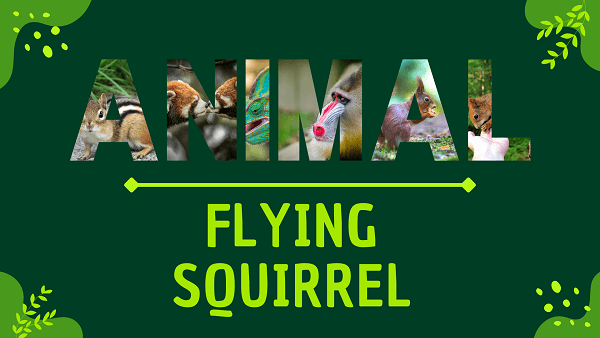Flying Squirrel | Facts, Diet, Habitat & Pictures
Home » Animals » Flying Squirrel | Facts, Diet, Habitat & Pictures
Flying Squirrel Overview
Appearance
The flying squirrel boasts a unique charm, distinguished by its small size and striking membrane of skin, known as the patagium, that stretches between its front and hind legs. With large, round eyes that exude an inquisitive expression, it projects an aura of curiosity.
This small mammal’s fur ranges from soft grays to browns, perfectly suited to its arboreal habitats. Its compact frame and distinctive features enable it to glide gracefully through the night skies.
Origins And Evolution
The origins and evolution of flying squirrels trace back through the annals of time, with fossil evidence unveiling their presence in ancient ecosystems. As their ancestors navigated diverse habitats, the pressures of natural selection sculpted their unique adaptations.
Gradually, distinctive traits such as the patagium, a skin flap enabling gliding, emerged as hallmark features of these nocturnal creatures. Over millions of years, flying squirrels diversified into various species, each tailor-made for their specific environments.
This evolutionary journey exemplifies the remarkable adaptations that have enabled flying squirrels to conquer the skies and thrive in the arboreal realms they call home.
Behavior and Lifestyle
Flying squirrels exhibit a captivating and nocturnal lifestyle, emerging under the cover of darkness to explore the treetops. With their agile bodies and the remarkable patagium, they gracefully glide between trees in search of food and shelter.
Social creatures, flying squirrels often share tree cavities with family members, forming close-knit groups. Their diet primarily consists of nuts, seeds, fruits, and insects, all of which sustain their high-energy, aerial escapades.
Scientific Classification
- Kingdom: Animalia
- Phylum: Chordata
- Class: Mammalia
- Order: Rodentia
- Family: Sciuridae
- Subfamily: Sciurinae
- Tribe: Pteromyini
Flying Squirrel Locations
- United States
- Canada
- Mexico
- Japan
- China
- Russia
- India
- Nepal
- Bhutan
- Thailand
- Vietnam
- Malaysia
- Indonesia
- Philippines
- Taiwan
- Sri Lanka
- Ukraine
- Poland
- Finland
- Sweden
Fast Facts
- Name: Flying Squirrel
- Scientific Name: Pteromyini
- Habitat: Forest canopies
- Diet: Nuts, seeds
- Physical Features: Flap-like membranes
- Nocturnal: Active at night
- Solitary: Mostly solitary
- Unique Order: Rodentia
- Lifespan: Up to 6 years
- Conservation Status: Species-specific
- Fun Facts: Glide between trees, superb vision
Physical Characteristics
- Color: Varied fur
- Skin Type: Fluffy fur
- Top Speed: 15 mph
- Lifespan: 5-6 years
- Weight: Lightweight body
- Length: 8-12 inches
- Age of Sexual Maturity: 1 year
- Age of Weaning: 6 weeks
Flying Squirrel FAQs
Can flying squirrels really fly?
Flying squirrels don’t fly in the traditional sense but glide using the patagium, a specialized membrane that stretches between their limbs, allowing them to glide between trees.
Where can flying squirrels be found?
Flying squirrels are found in various parts of North America, Europe, Asia, and parts of Africa, living in wooded habitats.
What do flying squirrels eat?
Flying squirrels have an omnivorous diet that includes nuts, seeds, fruits, insects, and small prey.
Are flying squirrels nocturnal?
Yes, flying squirrels are primarily nocturnal, meaning they are most active during the night.
Do flying squirrels make good pets?
Flying squirrels have specific dietary and habitat requirements, making them challenging to keep as pets. In many places, it’s illegal to keep them without proper permits.


